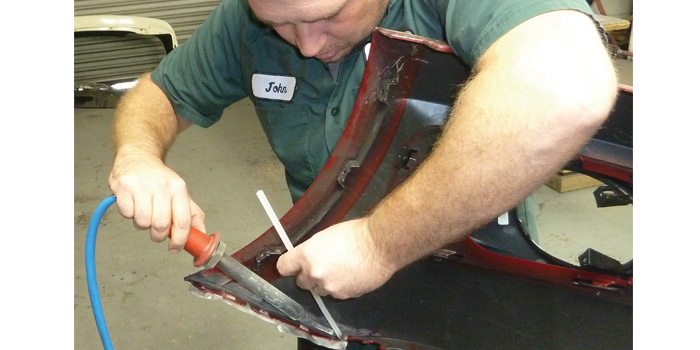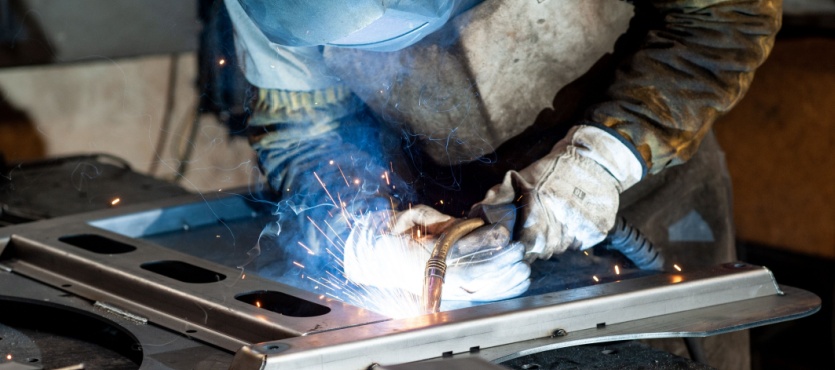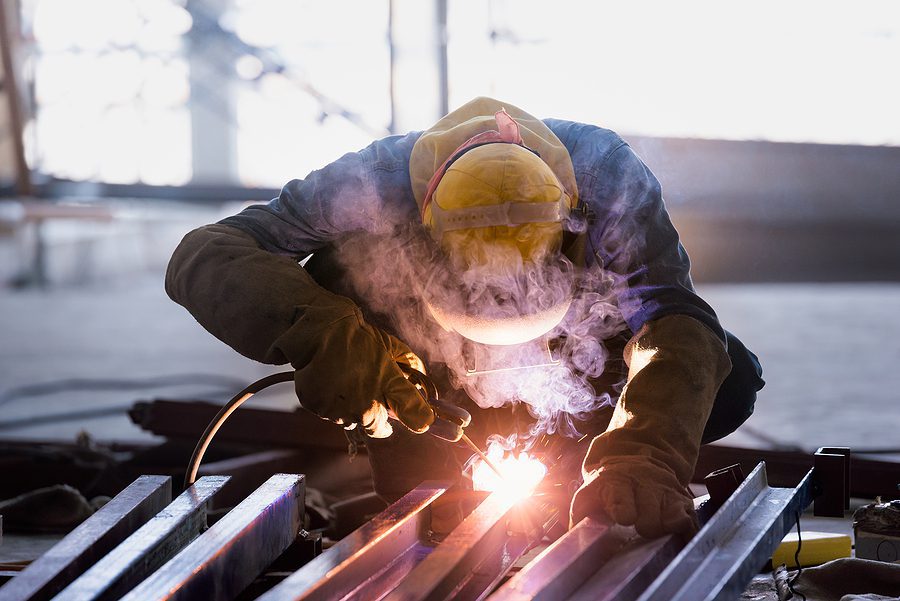Common Welding Fixing Issues and Exactly How to Address Them Successfully
Welding repair services frequently experience a variety of problems that can threaten the stability of the last item. Typical problems consist of poor infiltration, porosity, and imbalance, to name a few. Each flaw presents special obstacles that need details methods for resolution. Comprehending these issues is vital for welders intending to boost their results and abilities. This discussion will explore these typical welding repair problems and effective methods to resolve them.
Insufficient Penetration
Insufficient penetration happens when the weld metal stops working to fully fuse with the base material, leading to weak joints and potential structural failings. This concern frequently originates from not enough warm input, inaccurate electrode angle, or improper welding rate. Welders might experience insufficient infiltration because of a miscalculation of the essential criteria for a particular material thickness or type. Additionally, contamination on the base product's surface area can hinder effective bonding, worsening the problem. To deal with insufficient infiltration, welders need to ensure ideal settings on their tools and keep a clean work surface area. Routine examination of welds is advised to determine any kind of deficiencies early, allowing for prompt modifications and the avoidance of endangered structural stability in welded settings up.
Porosity
Porosity is a common flaw in welded joints that shows up as little gas bubbles entraped within the weld metal. This flaw can jeopardize the honesty of the weld, bring about decreased strength and potential failing under tension. Montana Mobile Welding and Repair Belgrade Fabrication. Porosity typically develops from contamination, wetness, or improper welding methods, which permit gases to leave right into the liquified weld pool. To address porosity, welders need to ensure correct surface area preparation, preserve a tidy working atmosphere, and use appropriate welding criteria. Additionally, selecting the ideal filler product and shielding gas can alleviate gas entrapment. Regular assessment and testing of welds can aid determine porosity early, assuring prompt restorative activities are taken, thereby maintaining the quality and integrity of the welded structure
Imbalance
Imbalance in welding can emerge from numerous elements, consisting of incorrect configuration and thermal expansion. Recognizing the root causes is important for effective resolution. Numerous improvement strategies are available to realign parts and ensure architectural stability.
Reasons for Imbalance
Welding imbalance typically stems from a range of underlying problems that can jeopardize architectural honesty. One primary cause is improper fit-up of elements prior to welding, which can lead to gaps and uneven surfaces. Variants in thermal development throughout the welding procedure can also cause distortion, especially if the products being joined have different coefficients of growth. Furthermore, insufficient fixturing and clamping may fall short to hold parts firmly in area, causing activity throughout welding. Improperly maintained equipment, consisting of welding machines and tools, might introduce disparities in the weld grain, further adding to misalignment. Operator error, stemming from not enough training or experience, can additionally play a considerable duty in producing misaligned welds.

Adjustment Methods Readily Available
Attending to misalignment properly needs a mix of restorative methods tailored to the specific concerns at hand. One usual method is using jigs or fixtures to hold elements in the right position during welding, guaranteeing constant alignment. Additionally, preheating the products can aid minimize distortion and enhance fit-up. For significant imbalance, mechanical realignment techniques, such as using hydraulic jacks or clamps, can be employed to deal with the position prior to welding. Post-weld heat therapy might likewise be required to ease anxieties brought on by imbalance. Cautious evaluation and adjustment throughout the arrangement stage can protect against misalignment issues from ending up being substantial issues, promoting a smoother welding process and improving total architectural stability.
Distortion
Distortion is a typical obstacle in welding that can develop from numerous elements, including unequal heating & cooling. Understanding the reasons of distortion is vital for carrying out reliable prevention methods. Resolving this issue not only improves architectural integrity yet additionally improves the total top quality of the weld.
Reasons for Distortion
When based on the intense warmth of welding, materials typically go through changes that can result in distortion. This sensation largely occurs from thermal growth and tightening throughout the welding process. As the weld area warms up, the product broadens; upon cooling, it contracts, which can produce inner stresses. On top of that, unequal heating throughout a workpiece can intensify these tensions, resulting in warping or bending. The kind of product likewise plays a considerable duty; metals with varying thermal conductivity and coefficients of expansion might react in different ways, leading to unpredictable distortions. Poor joint style and insufficient fixturing can contribute to misalignment during welding, enhancing the probability of distortion. Recognizing these reasons is important for effective welding repair and prevention techniques.
Avoidance Techniques
Reliable prevention techniques for distortion throughout welding concentrate on controlling warmth input and making certain proper joint design. Keeping a constant heat input aids to lessen thermal growth and contraction, which can cause distortion. Making use of strategies such as pre-heating the work surface can also decrease the temperature level slope, promoting consistent home heating. In addition, choosing appropriate joint layouts, such as T-joints or lap joints, can improve security and minimize anxiety concentrations. Executing correct fixturing to protect the work surfaces in position even more help in maintaining positioning during the welding procedure. Finally, staggered welding series can distribute warmth a lot more equally, preventing local distortion. By using these approaches, welders can greatly lower the possibility of distortion and enhance the general high quality of their welds.
Breaking
Cracking is an usual problem experienced in welding repair services, often resulting from various variables internet such as improper cooling rates, product selection, or insufficient joint prep work. The incident of splits can significantly endanger the stability of the weld, bring about possible failings throughout procedure. To resolve this problem, welders have to initially evaluate the source, guaranteeing that products are suitable and suitably chosen for the particular application. In addition, regulating the air conditioning rate throughout the welding procedure is necessary; rapid cooling can generate stress and anxiety and cause cracking. Appropriate joint layout and prep work additionally add to reducing the risk. Applying these strategies can boost weld quality and durability, ultimately minimizing the possibility of fracturing in finished weldments.

Insufficient Combination
A significant issue in welding fixings is incomplete fusion, which takes place when the weld metal does not appropriately bond with the base product or previous weld passes - Fabrication. This issue can bring about weak points in the joint, possibly jeopardizing the integrity of the bonded structure. Variables contributing to insufficient combination include not enough warm input, inappropriate welding method, and contamination of the surface areas being signed up with. To address this concern successfully, welders need to assure proper pre-weld cleaning and surface prep work, in addition to adjust their welding criteria to attain appropriate penetration and blend. Regular evaluation throughout the welding procedure can additionally assist identify insufficient fusion early, enabling timely restorative actions to improve the total high quality of the weld
Overheating
While welding repairs can improve structural integrity, overheating presents a significant obstacle that can result in product degradation. Extreme heat throughout welding additional info can alter the mechanical buildings of metals, leading to minimized strength, enhanced brittleness, and warping. This phenomenon is especially vital in high-stress applications where architectural integrity is critical. Identifying getting too hot can involve visual inspections for staining or distortion, as well as monitoring temperature during the welding procedure. To mitigate the dangers related to getting too hot, welders ought to employ appropriate techniques, such as regulating warmth input, adjusting travel speed, and making use of suitable filler materials. Additionally, implementing pre- and post-weld warm treatments can help restore material properties and enhance the overall quality of the repair service, ensuring long-term performance and safety and security.
Regularly Asked Inquiries
What Are the Typical Signs of a Welding Flaw?

Just How Can I Evaluate My Welds for High quality?
To check welds for quality, one can utilize visual examinations, ultrasonic testing, and radiographic approaches. Each strategy assures structural integrity, recognizes defects, and verifies adherence to defined criteria, eventually enhancing the dependability of the welded joints.
What Safety and security Preventative Measures Should I Take While Welding?
When welding, one ought to prioritize safety and security by wearing suitable individual protective devices, making certain appropriate ventilation, protecting flammable products away, preserving a clean office, and understanding surroundings to stop crashes and injuries.
Can I Fix a Weld Without Redoing the Entire Joint?
Fixing a weld without remodeling the whole joint is possible, depending on the damages (Montana Mobile Welding and Repair Belgrade Welding). Strategies such as grinding, including filler product, or using a welding procedure can successfully deal with specific imperfections while maintaining the surrounding structure
What Tools Are Important for Effective Welding Repairs?
Important devices for efficient welding fixings consist of a welding equipment, cord brush, mill, protective equipment, clamps, and filler products. Each tool plays a vital role in ensuring quality and security throughout the repair process. Porosity typically emerges from contamination, moisture, or improper welding strategies, which enable gases to escape into the molten weld swimming pool. Badly maintained devices, consisting of welding makers and devices, may present variances in the weld grain, further contributing to imbalance. When subjected to the extreme warmth of welding, materials often go through adjustments that can lead to distortion. useful link Breaking is an usual issue encountered in welding repair services, frequently resulting from numerous aspects such as improper air conditioning rates, material choice, or poor joint prep work. A considerable problem in welding fixings is incomplete combination, which takes place when the weld metal does not sufficiently bond with the base product or previous weld passes.
Comments on “Reliable fixes for poor fusion from Montana Mobile Welding and Repair”